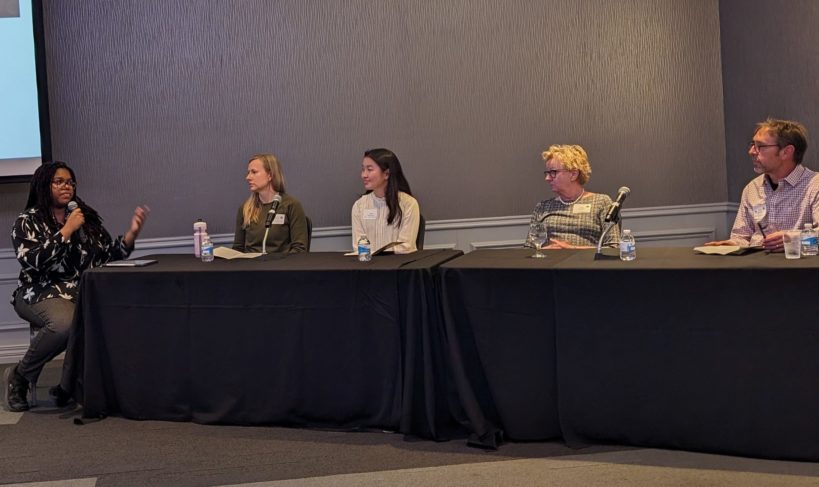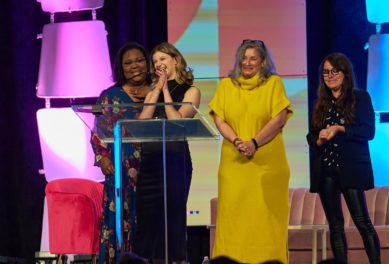Carleton Weitz Fellows | July 9, 2024
Weitz Insights

Four people on a panel are looking to the left as the panel moderator asks a question. All five people are seated behind two tables with plain black tablecloths over them.
Carleton Weitz Fellows | June 25, 2024
Weitz Fellow Voices: Chisomnazu at UNO Service Learning Academy
This is a guest blog written by one of our Weitz Fellows, Chisomnazu Oguh. This blog is estimated to take 3 minutes to read.
Hello! My name is Chisomnazu Oguh and I am the Weitz Fellow at the University of Nebraska (UNO) Service Learning Academy (SLA). Based on campus, we at SLA help faculty members, community partner organizations (typically non-profit organizations), and K-12 teachers incorporate service learning projects into their course material. Service learning is defined as “a method of teaching that combines classroom instruction with meaningful, community-identified service. This form of engaged teaching and learning emphasizes critical thinking by using reflection to connect course context with real-world experiences” (SLA website).
As the Weitz Fellow, I would describe my work schedule to be project-based, because my day-to-day varies based on upcoming events. For example, during the summer in July, SLA runs a week-long workshop called the Service Learning Seminar where we teach educators about service learning, the benefits that it has on student engagement with course material, and work with them to develop a project that can be implemented within the following school year. Ironically, my first week was at Seminar 2023. I was not an educator, but I was able to learn more about service learning and the type of support that I provide for educators and community partners all over Omaha.
Speaking of support, a big part of making sure that service learning projects run without a hitch is project planning. Below is the project planning process:
- Schedule a meeting with the educator (typically faculty members) to brainstorm ideas for a service learning project.
- Based on the meeting, reach out to various community partners to gauge interest in collaboration for a service learning project.
- Schedule a meeting between the educator and community partner to determine if partnership is possible and, if so, determine dates for project implementation.
- Determine needs that SLA can provide to streamline project implementation.
The steps above are general but provide insight into how we at SLA help bridge the gap between the community and the classroom. As you can imagine, keeping track of where each project is in development can be difficult, especially when different staff members are communicating directly to others via email. To help streamline this process, I implemented a central hub of communication on a project management platform, Trello. With Trello, we can stay up to date with multiple courses that are in various stages of development.
Over my year at the SLA, I have been given the opportunity to see the impact of service learning through final presentations where students shared the cool stuff they did to reflection meetings where faculty members excitedly told us just how much their students learned from working with the community partner. As someone who is interested in education, I am grateful to the Weitz Family Foundation for giving me the opportunity to learn about service learning and its intricacies as I hope to implement it in a classroom that I run in the future.

